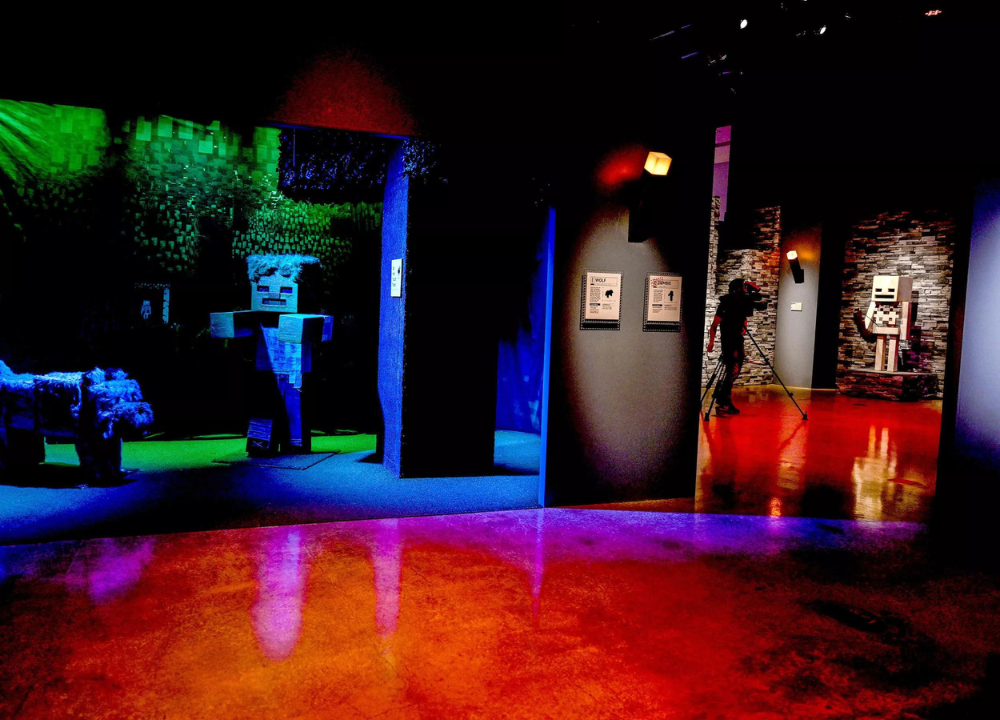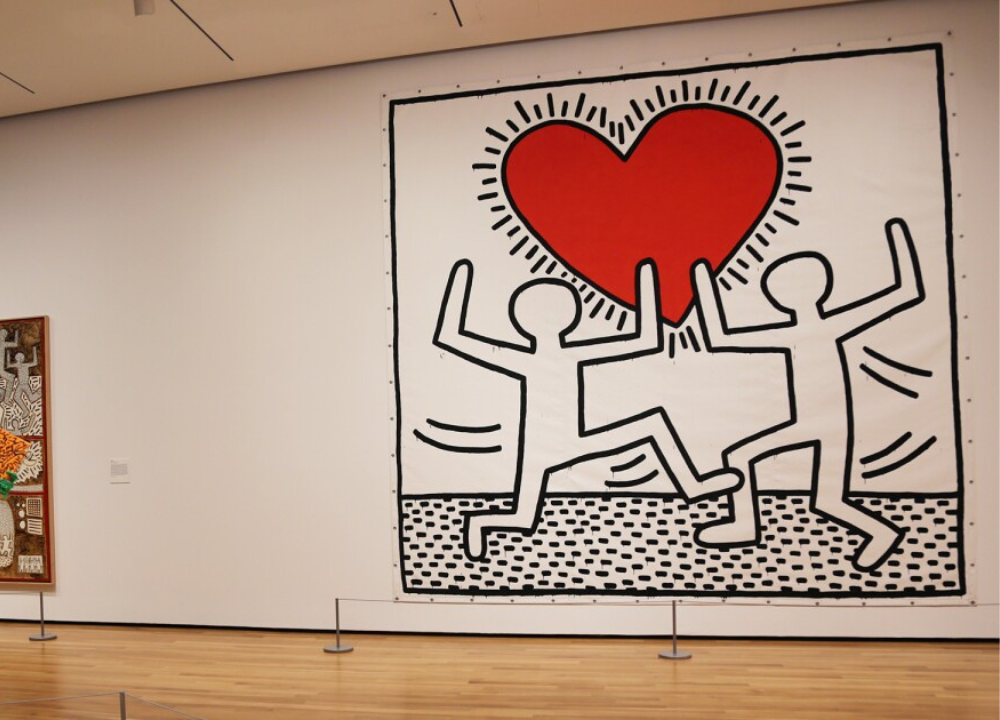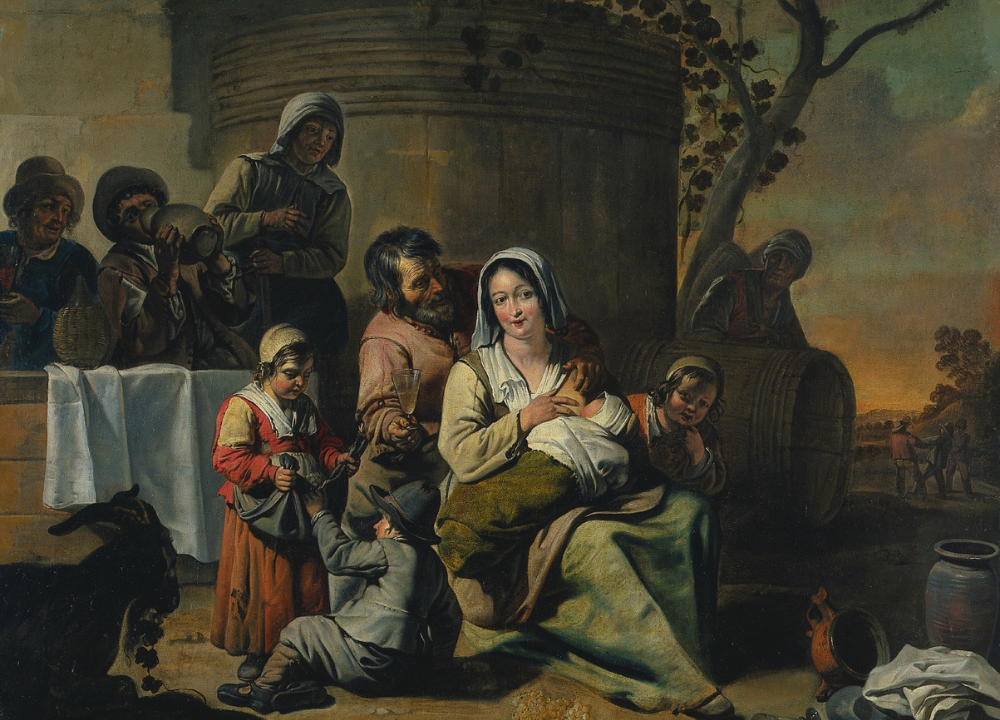Mannerism is an art movement that emerged in the late Renaissance and preceded the Baroque period. It is characterized by elongated forms, exaggerated poses, and complex compositions.
Mannerism flourished in the late 16th century, reflecting a shift from the balanced harmony of the Renaissance. Artists sought to express individualism and emotion, leading to innovative techniques and styles. This movement arose in response to the rigid ideals of classical art, allowing for greater artistic freedom.
Mannerist works often feature unusual proportions and vibrant colors, creating a sense of tension and drama. Prominent figures like El Greco and Parmigianino exemplified this style, pushing boundaries and redefining artistic expression. Understanding Mannerism offers insight into the transition between the serene aesthetics of the Renaissance and the dynamic energy of the Baroque era.
Origins Of Mannerism
The Mannerism art movement emerged in the late Renaissance. It acted as a bridge to the Baroque period. Mannerism is known for its unique style and emotional intensity. The Origins of Mannerism lie in the changing cultural landscape of Europe. Artists began to explore new ideas and techniques, breaking away from classicism.
Historical Context
Mannerism emerged in the 16th century, during a time of significant change. The Renaissance had celebrated balance and harmony. However, many artists sought to express deeper emotions and complexities. The political and social climate also shifted. Here are key factors that influenced Mannerism:
- The decline of the Renaissance ideals.
- Shifts in political power across Europe.
- Religious tensions, notably the Protestant Reformation.
- The influence of classical antiquity on artists.
This period saw the rise of individual expression. Artists began to reject strict rules. They experimented with proportions, colors, and forms. Mannerism often features elongated figures and unusual compositions. Here’s a quick comparison of the Renaissance and Mannerism:
| Aspect | Renaissance | Mannerism |
|---|---|---|
| Proportions | Balanced and harmonious | Elongated and exaggerated |
| Emotional Expression | Calm and serene | Intense and dramatic |
| Composition | Stable and centered | Dynamic and complex |
Influential Artists
Several artists played a crucial role in the development of Mannerism. Their works showcased new techniques and ideas. Here are some key figures:
- Michelangelo – His later works displayed emotional depth and complexity.
- Parmigianino – Known for his elongated forms and intricate details.
- El Greco – Combined spiritual themes with dramatic color and light.
- Giambologna – Excelled in dynamic sculptures that showcased movement.
These artists influenced many others. They challenged traditional views of art. Their works often reflect a sense of tension and unease. This unique style captivated audiences and laid the groundwork for the Baroque era.
Characteristics Of Mannerism
Mannerism is an art movement that emerged between the Renaissance and Baroque periods. It is known for its unique style and complex forms. The characteristics of Mannerism set it apart from earlier art. Artists during this time focused on expressing emotions and ideas in new ways. This led to a shift in how figures and spaces were represented. Two key characteristics of Mannerism are stylization and unconventional proportions. Each characteristic adds depth and intrigue to the artwork of this fascinating period.
Stylization
Stylization is one of the most prominent features of Mannerism. Artists used this technique to create idealized forms that often looked unnatural. They emphasized beauty and elegance over realism. This led to several distinct traits:
- Exaggerated Features: Faces and bodies often appeared elongated.
- Vivid Colors: Bright and bold colors replaced natural hues.
- Complex Poses: Figures were often shown in twisted, dynamic positions.
These elements made Mannerist art visually striking. The focus shifted from realism to artistic expression. Artists aimed to evoke emotions rather than depict the world accurately. For example, the works of El Greco showcase these stylized features beautifully. His figures look almost otherworldly, with elongated limbs and dramatic expressions.
| Feature | Description |
|---|---|
| Exaggerated Features | Long limbs and faces create an ethereal look. |
| Vivid Colors | Bright colors express strong emotions. |
| Complex Poses | Dynamic positions add movement to the art. |
Unconventional Proportions
Unconventional proportions are another hallmark of Mannerism. Artists often distorted the size and shape of figures. This technique challenged traditional views of beauty and harmony. Here are some key aspects:
- Elongated Bodies: Figures often appear taller and thinner.
- Disproportionate Heads: Heads may seem oversized compared to bodies.
- Emphasis on Gesture: Actions are exaggerated to convey drama.
These unconventional proportions created a sense of tension and excitement. Artists like Parmigianino took this to new heights. His famous work, Madonna with the Long Neck, features a slender figure with an unusually long neck. This not only draws attention but also adds a sense of elegance.
Understanding these characteristics helps us appreciate Mannerism. It reveals the artist’s desire to explore new ideas. The movement was a bridge between the orderly Renaissance and the emotional Baroque. Mannerism invites viewers to see the world through a different lens.

Key Works And Artists
Exploring the transition between the Renaissance and Baroque periods, Mannerism emerged as a distinct art movement characterized by its elongated forms, exaggerated poses, and intricate compositions. Key works and artists from this period offer a fascinating insight into the artistic experimentation and innovation of the era.
Famous Paintings
One of the most iconic paintings of the Mannerist period is “The Last Judgment” by Michelangelo, a monumental fresco located in the Sistine Chapel. The painting showcases the dramatic and emotive style typical of Mannerism, with elongated figures and dynamic compositions. Another notable work is “The Entombment of Christ” by Jacopo Pontormo, known for its unconventional composition and vivid colors. Additionally, Parmigianino’s “Madonna with the Long Neck” exemplifies the exaggerated proportions and ethereal beauty characteristic of Mannerist art.
- “The Last Judgment” by Michelangelo
- “The Entombment of Christ” by Jacopo Pontormo
- “Madonna with the Long Neck” by Parmigianino
Notable Sculptors
In the realm of sculpture, Mannerist artists pushed the boundaries of form and expression. Giambologna, renowned for his dynamic and intricate sculptures, created masterpieces such as “The Rape of the Sabine Women,” showcasing the artist’s ability to capture movement and emotion in stone. Benvenuto Cellini, another prominent sculptor of the period, crafted the elaborate “Perseus with the Head of Medusa,” demonstrating a blend of classical influences with Mannerist aesthetics.
- Giambologna – “The Rape of the Sabine Women”
- Benvenuto Cellini – “Perseus with the Head of Medusa”
Mannerism In Architecture
Mannerism was an exciting art movement that emerged between the Renaissance and Baroque periods. It focused on exaggerated forms and complex compositions. In architecture, Mannerism brought unique styles and innovative designs. Architects experimented with space and structure, creating buildings that were both functional and artistic. This style emphasized elegance, sophistication, and dramatic effects, making it stand out from its predecessors.
Innovative Designs
Mannerist architecture introduced several innovative designs that changed how buildings looked and felt. Architects combined classical elements with new ideas. Here are some key features of Mannerist designs:
- Complex Shapes: Buildings often had unusual and intricate shapes.
- Contrasting Elements: Use of different materials created striking contrasts.
- Symmetry and Asymmetry: A mix of balanced and unbalanced designs.
- Decorative Details: Ornate decorations adorned facades and interiors.
One famous example is the Piazza del Campidoglio in Rome. Designed by Michelangelo, it features a trapezoidal shape that invites visitors in. The square’s layout and the surrounding buildings create a dramatic effect.
Here’s a table showcasing some notable elements of Mannerist architecture:
| Element | Description |
|---|---|
| Columns | Refined and elongated columns often used for visual impact. |
| Arches | Elaborate arches that create a sense of movement. |
| Windows | Large windows that enhance light and space. |
Significant Structures
Several significant structures showcase the brilliance of Mannerist architecture. These buildings reflect the style’s unique characteristics and innovative spirit. Some notable examples include:
- Palazzo del Te in Mantua: A masterpiece by Guilio Romano, known for its playful use of classical elements.
- Villa Rotonda near Vicenza: Designed by Andrea Palladio, this villa blends harmony with bold architectural forms.
- St. Peter’s Basilica in Vatican City: Though begun in the Renaissance, its completion showcased Mannerist features, especially in the dome.
These structures highlight how Mannerism pushed the boundaries of traditional architecture. They emphasize creativity and artistic expression while maintaining functionality. Each building tells a story and invites admiration.
Themes And Symbolism
Mannerism was a unique art movement that emerged between the Renaissance and Baroque periods. It focused on expressing complex themes and rich symbolism. Artists used these themes to convey deeper messages. They often highlighted emotional depth and religious significance in their works. Understanding these themes helps us appreciate Mannerism’s lasting impact on art.
Religious Motifs
Religious motifs are central to Mannerist art. Artists used these themes to convey spiritual ideas. They often depicted biblical stories and figures in unusual ways. This added a sense of drama and intensity.
- Figures in Distortion: Many artworks show elongated figures. This emphasizes their otherworldly nature.
- Symbolic Colors: Colors often carry deep meanings. For example, red symbolizes sacrifice, while blue represents divinity.
- Complex Compositions: Many pieces feature crowded scenes. This complexity reflects the chaos of human emotion.
| Artwork | Artist | Religious Motif |
|---|---|---|
| The Madonna with the Long Neck | Parmigianino | Virgin Mary |
| The Last Judgment | Michelangelo | Final Judgment |
| The Holy Family | El Greco | Holy Family |
Mannerist artists often used religious motifs to challenge viewers. They aimed to provoke thought and reflection. This approach set them apart from their Renaissance predecessors.
Human Emotion
Mannerism deeply explores human emotion. Artists expressed feelings through exaggerated forms and poses. This focus on emotion creates a connection with the viewer.
- Dynamic Poses: Artists used twisted and contorted bodies. This adds energy and tension to the artwork.
- Facial Expressions: Faces often display intense emotions. This invites viewers to engage with the scene.
- Contrasting Elements: Light and shadow are used to create drama. These contrasts highlight emotional extremes.
Many Mannerist pieces evoke feelings of anxiety, longing, or melancholy. This emotional depth makes the art relatable. It captures the complexity of human experiences.
By focusing on human emotion, Mannerism paved the way for later art movements. It allowed artists to explore the depths of the human soul.
Cultural Impact
Mannerism emerged in the late Renaissance and preceded the Baroque era. This art movement brought a unique style that reshaped how artists viewed their work. Its cultural impact is profound, influencing various aspects of art and society. Mannerism challenged traditional perspectives and encouraged creativity. Artists began to experiment with forms, colors, and themes. This shift not only marked a transition in art but also reflected broader cultural changes of the time.
Influence On Later Art
Mannerism significantly shaped the development of later art movements. Its unique characteristics influenced artists from different eras. Some of the key impacts include:
- Complex Compositions: Mannerist artists created intricate and crowded scenes.
- Exaggerated Proportions: Figures were often elongated and posed in unusual ways.
- Emotional Expressions: Mannerism focused on conveying strong feelings and moods.
These traits can be seen in various art movements that followed:
| Art Movement | Influence from Mannerism |
|---|---|
| Baroque | Enhanced drama and emotion in artworks. |
| Romanticism | Focus on individual expression and emotion. |
| Expressionism | Use of vivid colors and distorted forms. |
Prominent Mannerist artists like El Greco and Parmigianino paved the way for these movements. Their works inspired future generations. Mannerism’s legacy is evident in the evolution of art. The movement encouraged artists to explore new ideas and break from tradition.
Cross-cultural Exchange
Mannerism fostered a rich cross-cultural exchange during its time. Artists traveled widely, sharing ideas and techniques. This exchange led to the blending of different cultural elements in art. For example:
- Italian Influence: Italian Mannerists inspired artists in Spain, France, and the Netherlands.
- Asian Influence: Trade routes introduced Asian motifs and styles into European art.
- Religious Themes: Mannerism often reflected various religious influences from different cultures.
Key aspects of this cultural exchange include:
| Region | Influence Received |
|---|---|
| Spain | Adoption of dramatic contrasts and emotional depth. |
| France | Integration of elegance and sophistication in compositions. |
| Netherlands | Focus on realism and everyday life scenes. |
This cross-cultural dialogue enriched Mannerism and future art movements. It highlighted the importance of cultural connections in art. Artists learned from each other, creating a vibrant artistic community.
Criticism And Decline
Mannerism stands as a unique art movement between the Renaissance and Baroque. It flourished in the late 16th century. Artists embraced complexity and emotion. As time passed, criticism grew against Mannerism. Critics viewed it as overly artificial and exaggerated. This led to its decline as artists sought new directions.
Contemporary Reactions
During its height, Mannerism faced mixed reactions. Some praised its innovation, while others criticized its style.
Key contemporary reactions included:
- Admiration for Skill: Artists showcased advanced techniques.
- Discontent with Realism: Critics felt it strayed too far from nature.
- Emphasis on Emotion: Many appreciated the emotional depth.
Critics believed Mannerist art lacked the balance of the Renaissance. They pointed out that:
| Aspect | Mannerism | Renaissance |
|---|---|---|
| Proportions | Exaggerated | Natural |
| Color | Bright and Unnatural | Soft and Realistic |
| Emotion | Intense | Balanced |
This divergence from traditional values marked a pivotal moment. Artists began to explore new techniques and subjects. The shift in perception initiated the decline of Mannerism.
Transition To Baroque
The decline of Mannerism paved the way for the Baroque movement. Artists sought more realism and emotional engagement. Baroque art embraced drama and grandeur. It reflected changes in society and culture.
Characteristics of Baroque included:
- Dynamic Compositions: Movement became a focal point.
- Intense Light and Shadow: Known as chiaroscuro.
- Realistic Details: Artists depicted everyday life.
Key artists like Caravaggio and Bernini led this transition. They rejected Mannerism’s rigidity. Instead, they focused on:
- Creating emotional connections.
- Using dramatic contrasts.
- Incorporating naturalism.
This shift signified a new era in art. Baroque became synonymous with emotional depth and realism. It marked a departure from the complexities of Mannerism.
Legacy Of Mannerism
The legacy of Mannerism is both rich and complex. This art movement emerged between the Renaissance and Baroque periods, influencing many artists and styles. Mannerism introduced new ideas about form, space, and emotion. It challenged the norms of realism seen in the Renaissance. Today, we see echoes of Mannerist ideas in modern art. Artists continue to explore themes of exaggeration, distortion, and unconventional beauty. This section dives into the modern interpretations and the continuing influence of Mannerism.
Modern Interpretations
Modern artists find inspiration in Mannerism in various ways. They explore its unique features, such as elongated figures and unusual compositions. Here are some modern interpretations:
- Use of vibrant colors to convey emotion
- Incorporation of abstract forms and shapes
- Focus on dramatic lighting and shadows
Many contemporary artists create works that reflect Mannerist ideas. They blend traditional techniques with modern themes. For example, artists like Jeff Koons and Damien Hirst play with exaggeration. Their art often features playful forms and vibrant colors, reminiscent of Mannerism.
Here’s a simple table showing some modern artists and their Mannerist influences:
| Artist | Influence from Mannerism |
|---|---|
| Jeff Koons | Playful forms, bright colors |
| Damien Hirst | Exaggeration of themes, bold visuals |
| Yayoi Kusama | Repetitive patterns, surreal forms |
These artists show how Mannerism’s spirit lives on. Their works invite viewers to rethink traditional beauty.
Continuing Influence
The influence of Mannerism extends beyond just visual arts. It also shapes literature, theater, and architecture. Many writers and directors draw inspiration from its themes. They embrace tension, ambiguity, and emotional depth. Here are some areas where Mannerism continues to influence:
- Literature: Authors like Franz Kafka use distorted realities.
- Theater: Playwrights explore exaggerated characters and situations.
- Architecture: Designers apply Mannerist principles in modern buildings.
Mannerism also appears in popular culture. Movies often feature dramatic visuals and stylized characters. This artistic choice reflects Mannerist ideals. For example, films by Tim Burton showcase quirky characters and surreal settings. They echo the exaggerated forms and emotional intensity of Mannerism.
Art movements like Surrealism and Expressionism are influenced by Mannerist ideas. They share themes of distortion and emotional expression. This legacy ensures that Mannerism remains relevant in today’s artistic landscape.
Conclusion
Mannerism played a pivotal role in the transition from Renaissance to Baroque art. Its unique style challenged traditional norms, emphasizing emotion and complexity. This movement paved the way for future artistic innovations. Understanding Mannerism enriches our appreciation of art history, showcasing how creativity evolves over time.
Explore this fascinating period further to uncover its lasting impact.




